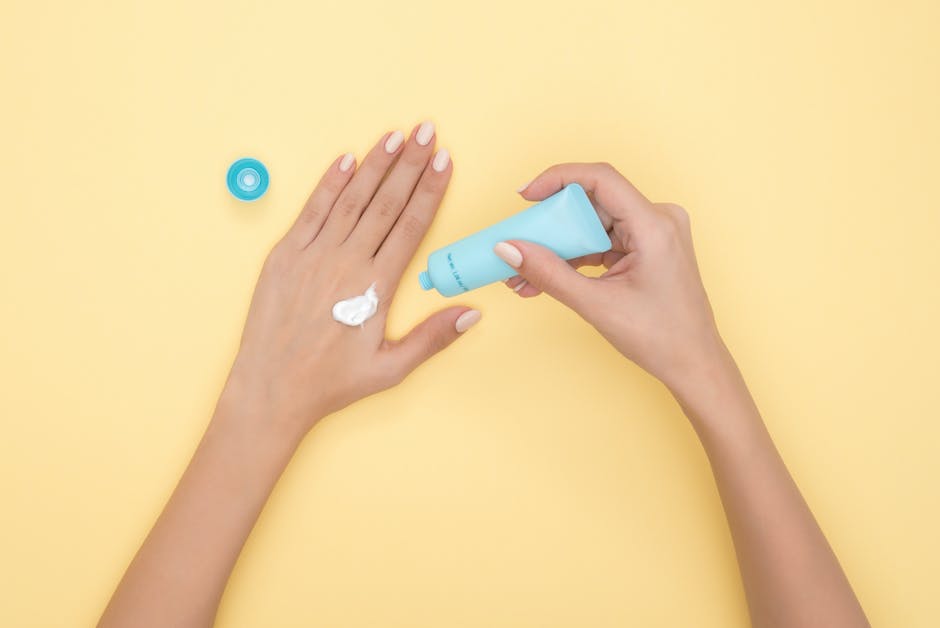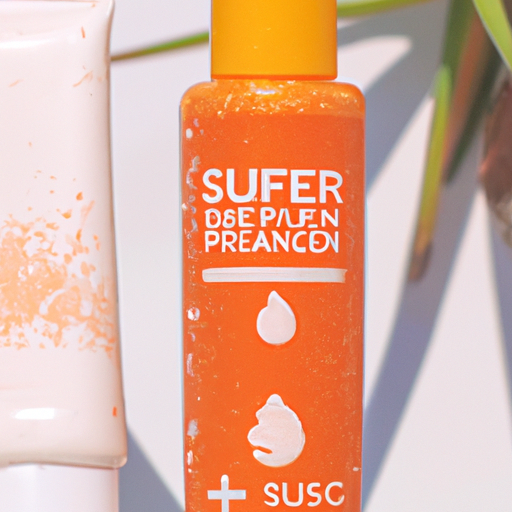
-
Table of Contents
- How Does Sunscreen Work to Protect Your Skin from UV Rays?
- What Are the Different Types of Sunscreen and Which Is Best for You?
- What Are the Benefits of Using Sunscreen?
- How Much Sunscreen Should You Use and How Often?
- What Are the Risks of Not Using Sunscreen?
- What Are the Different Ingredients in Sunscreen and How Do They Work?
- What Are the Different SPF Ratings and How Do They Affect Sun Protection?
- How Can You Tell If Your Sunscreen Is Working Properly?
- What Are the Best Sunscreen Practices for Children and Babies?
“Protect your skin from the sun’s harmful rays – use sunscreen!”
Sunscreen is an important part of any skin care routine, but many people don’t understand how it works or why it’s so important. Sunscreen is designed to protect your skin from the sun’s harmful ultraviolet (UV) rays, which can cause sunburn, skin cancer, and premature aging. In this article, we’ll discuss how sunscreen works, why you should use it, and how to choose the right sunscreen for your skin type.
How Does Sunscreen Work to Protect Your Skin from UV Rays?
Sunscreen is an essential part of any skin care routine, especially when spending time outdoors. Sunscreen works by forming a protective barrier on the skin that blocks out the sun’s harmful ultraviolet (UV) rays. UV rays are divided into two categories: UVA and UVB. UVA rays are the longer-wavelength rays that penetrate deeper into the skin and are responsible for premature aging and wrinkles. UVB rays are the shorter-wavelength rays that cause sunburns and skin cancer.
Sunscreen works by reflecting, absorbing, and scattering UV rays. The active ingredients in sunscreen, such as zinc oxide and titanium dioxide, act as a physical barrier that reflects and scatters UV rays away from the skin. Other ingredients, such as avobenzone, absorb UV rays and convert them into heat, which is then released from the skin.
It’s important to choose a sunscreen with an SPF (sun protection factor) of at least 30. This will provide the best protection against both UVA and UVB rays. It’s also important to apply sunscreen generously and reapply every two hours, or more often if you’re swimming or sweating.
By using sunscreen, you can protect your skin from the sun’s harmful UV rays and reduce your risk of skin cancer. So don’t forget to lather up before heading outdoors!
What Are the Different Types of Sunscreen and Which Is Best for You?
Sunscreen is an essential part of any skin care routine, and there are many different types of sunscreen available. Knowing which type of sunscreen is best for you can help you protect your skin from the sun’s harmful rays.
The most common type of sunscreen is chemical sunscreen. Chemical sunscreens contain active ingredients that absorb UV rays and convert them into heat, which is then released from the skin. Chemical sunscreens are often lightweight and easy to apply, but they can be irritating to sensitive skin.
Physical sunscreens, also known as mineral sunscreens, contain active ingredients such as zinc oxide and titanium dioxide. These ingredients sit on top of the skin and reflect UV rays away from the skin. Physical sunscreens are often thicker and can be more difficult to apply, but they are less likely to irritate sensitive skin.
Another type of sunscreen is a combination sunscreen, which contains both chemical and physical active ingredients. Combination sunscreens offer the best of both worlds, providing broad-spectrum protection from both UVA and UVB rays.
The best type of sunscreen for you will depend on your skin type and the amount of sun exposure you get. If you have sensitive skin, a physical sunscreen may be the best option. If you are looking for a lightweight sunscreen that is easy to apply, a chemical sunscreen may be the best choice. For broad-spectrum protection, a combination sunscreen may be the best option.
No matter which type of sunscreen you choose, it is important to apply it generously and reapply it every two hours or after swimming or sweating. Sunscreen is an essential part of any skin care routine, and choosing the right type of sunscreen for your skin can help you protect your skin from the sun’s harmful rays.
What Are the Benefits of Using Sunscreen?
Using sunscreen is one of the best ways to protect your skin from the sun’s harmful ultraviolet (UV) rays. Sunscreen helps to prevent sunburns, skin cancer, and premature aging of the skin. Here are some of the benefits of using sunscreen:
1. Sun Protection: Sunscreen helps to protect your skin from the sun’s UV rays, which can cause sunburns, skin cancer, and premature aging. Sunscreen with an SPF of 30 or higher is recommended for the best protection.
2. Skin Health: Sunscreen helps to keep your skin healthy by preventing sunburns and skin cancer. Sunburns can cause pain, swelling, and redness, while skin cancer can be life-threatening.
3. Anti-Aging: Sunscreen helps to prevent premature aging of the skin. UV rays can cause wrinkles, age spots, and other signs of aging.
4. Comfort: Sunscreen helps to keep your skin comfortable by preventing sunburns and skin cancer. Sunburns can be painful and uncomfortable, while skin cancer can be life-threatening.
Using sunscreen is one of the best ways to protect your skin from the sun’s harmful UV rays. Sunscreen helps to prevent sunburns, skin cancer, and premature aging of the skin. With so many benefits, it’s easy to see why sunscreen is an essential part of any skin care routine.
How Much Sunscreen Should You Use and How Often?
When it comes to sunscreen, it’s important to use the right amount and to reapply it often. The American Academy of Dermatology recommends using a sunscreen with an SPF of 30 or higher, and applying it liberally to all exposed skin. This means using about one ounce (enough to fill a shot glass) to cover your entire body.
It’s also important to reapply sunscreen every two hours, or more often if you’re swimming or sweating. Make sure to pay special attention to your face, ears, hands, and any other areas that may be exposed to the sun.
Finally, don’t forget to protect your lips with a lip balm that contains SPF. This will help protect your lips from sunburn and other damage caused by the sun’s rays.
By following these simple steps, you can help protect your skin from the sun’s harmful rays and keep your skin healthy and looking its best.
What Are the Risks of Not Using Sunscreen?

Not using sunscreen can be a risky decision. Sun exposure can cause a variety of skin problems, including sunburn, premature aging, and skin cancer. Sunburns can be painful and can cause skin to peel and blister. Over time, sun exposure can cause wrinkles, age spots, and other signs of premature aging. The most serious risk of not using sunscreen is skin cancer.
Skin cancer is the most common type of cancer in the United States. It is caused by too much exposure to ultraviolet (UV) radiation from the sun or tanning beds. UV radiation damages the DNA in skin cells, which can lead to skin cancer. The most common types of skin cancer are basal cell carcinoma, squamous cell carcinoma, and melanoma.
Using sunscreen is one of the best ways to protect your skin from the sun’s harmful UV rays. Sunscreen should be applied to all exposed skin, even on cloudy days. It should be reapplied every two hours and after swimming or sweating. Sunscreen with an SPF of 30 or higher is recommended.
Not using sunscreen can be a dangerous decision. Sun exposure can cause sunburn, premature aging, and skin cancer. To protect your skin, use sunscreen with an SPF of 30 or higher and reapply it every two hours. Taking these steps can help you stay safe and healthy in the sun.
What Are the Different Ingredients in Sunscreen and How Do They Work?
Sunscreen is an important part of any skin care routine, as it helps protect your skin from the sun’s harmful UV rays. But what exactly is in sunscreen and how does it work? Let’s take a look at the different ingredients in sunscreen and how they work.
The two main ingredients in sunscreen are chemical filters and physical blockers. Chemical filters, such as oxybenzone, avobenzone, and octinoxate, absorb UV rays and convert them into heat, which is then released from the skin. Physical blockers, such as titanium dioxide and zinc oxide, work by reflecting UV rays away from the skin.
In addition to these two main ingredients, sunscreen also contains other ingredients that help make it more effective. These include emollients, which help keep the skin moisturized; preservatives, which help prevent the growth of bacteria; and fragrances, which help mask the smell of the sunscreen.
Sunscreen also contains antioxidants, which help protect the skin from free radical damage caused by UV rays. Antioxidants such as vitamin C, vitamin E, and green tea extract can help reduce the signs of aging and protect the skin from sun damage.
Finally, sunscreen also contains other ingredients such as water, alcohol, and silicone, which help make the sunscreen easier to apply and spread evenly on the skin.
So there you have it – the different ingredients in sunscreen and how they work. Remember to always use sunscreen when you’re out in the sun, and to reapply it every two hours or after swimming or sweating.
What Are the Different SPF Ratings and How Do They Affect Sun Protection?
SPF stands for Sun Protection Factor and is a measure of how well a sunscreen will protect your skin from the sun’s ultraviolet (UV) rays. The higher the SPF number, the more protection you get from the sun’s UV rays.
SPF ratings range from 2 to 50+. SPF 2 blocks 50% of UVB rays, while SPF 50+ blocks 98% of UVB rays. It’s important to note that no sunscreen can block 100% of UVB rays.
SPF 15 is the minimum recommended for everyday use. It blocks 93% of UVB rays. SPF 30 blocks 97% of UVB rays and is recommended for extended outdoor activities. SPF 50+ is recommended for people with fair skin or those who are particularly sensitive to the sun.
It’s important to remember that SPF ratings only measure protection from UVB rays. UVA rays are also harmful and can cause skin damage and premature aging. To protect against both UVA and UVB rays, look for a sunscreen that is labeled “broad spectrum” or “UVA/UVB protection.”
No matter what SPF rating you choose, it’s important to apply sunscreen generously and reapply every two hours or after swimming or sweating. Wearing protective clothing, such as a hat and sunglasses, and avoiding the sun during peak hours (10am-4pm) are also important steps to take to protect your skin from the sun’s harmful rays.
How Can You Tell If Your Sunscreen Is Working Properly?
It’s important to make sure your sunscreen is working properly to protect your skin from the sun’s harmful UV rays. Here are a few tips to help you tell if your sunscreen is working properly:
1. Check the expiration date. Sunscreen has a shelf life and should be replaced after the expiration date.
2. Reapply often. Sunscreen should be reapplied every two hours, or more often if you are swimming or sweating.
3. Wear protective clothing. Wearing a hat, long-sleeved shirt, and sunglasses can help protect your skin from the sun’s rays.
4. Monitor your skin. If you notice any changes in your skin, such as redness or burning, it may be a sign that your sunscreen is not working properly.
By following these tips, you can ensure that your sunscreen is working properly and protecting your skin from the sun’s harmful UV rays.
What Are the Best Sunscreen Practices for Children and Babies?
When it comes to protecting your children and babies from the sun, sunscreen is an important part of the equation. Here are some best practices for using sunscreen on your little ones:
1. Choose a sunscreen that is specifically designed for children and babies. These sunscreens are usually formulated with gentler ingredients that are less likely to irritate sensitive skin.
2. Apply sunscreen generously and evenly to all exposed areas of skin, including the face, neck, ears, and hands. Make sure to reapply every two hours, or more often if your child is swimming or sweating.
3. Use a sunscreen with an SPF of at least 30. This will provide the best protection against both UVA and UVB rays.
4. Avoid sunscreens that contain oxybenzone, a chemical that can be absorbed into the skin and has been linked to hormone disruption.
5. Make sure to cover up your child with clothing, hats, and sunglasses when possible. This will provide additional protection from the sun’s harmful rays.
By following these best practices, you can help ensure that your children and babies are protected from the sun’s damaging rays.In conclusion, sunscreen is an important tool in protecting your skin from the sun’s harmful UV rays. It is important to use sunscreen with an SPF of at least 15, and to reapply it every two hours or after swimming or sweating. Sunscreen should be used year-round, even on cloudy days, to protect your skin from the sun’s damaging rays. Sunscreen is an important part of any skin care routine and should be used to protect your skin from the sun’s harmful UV rays.



